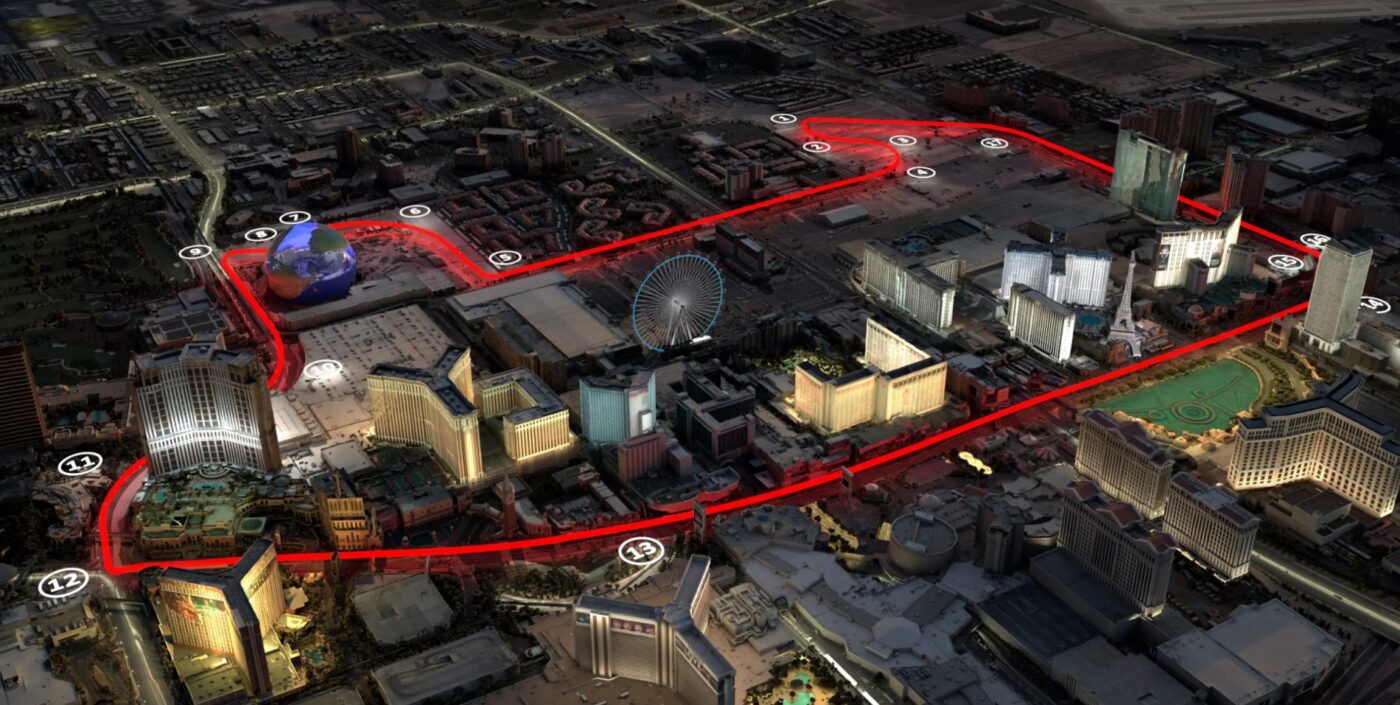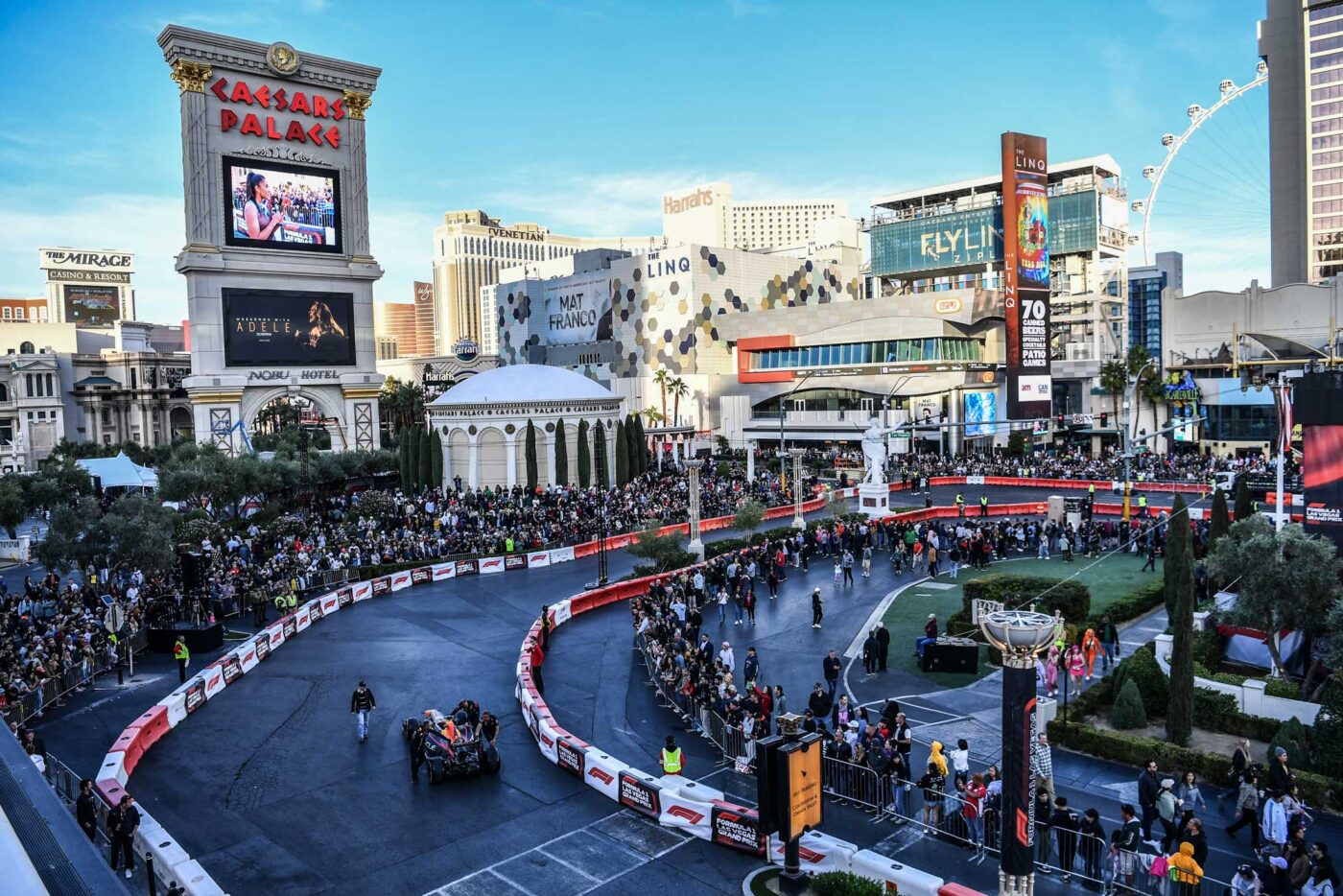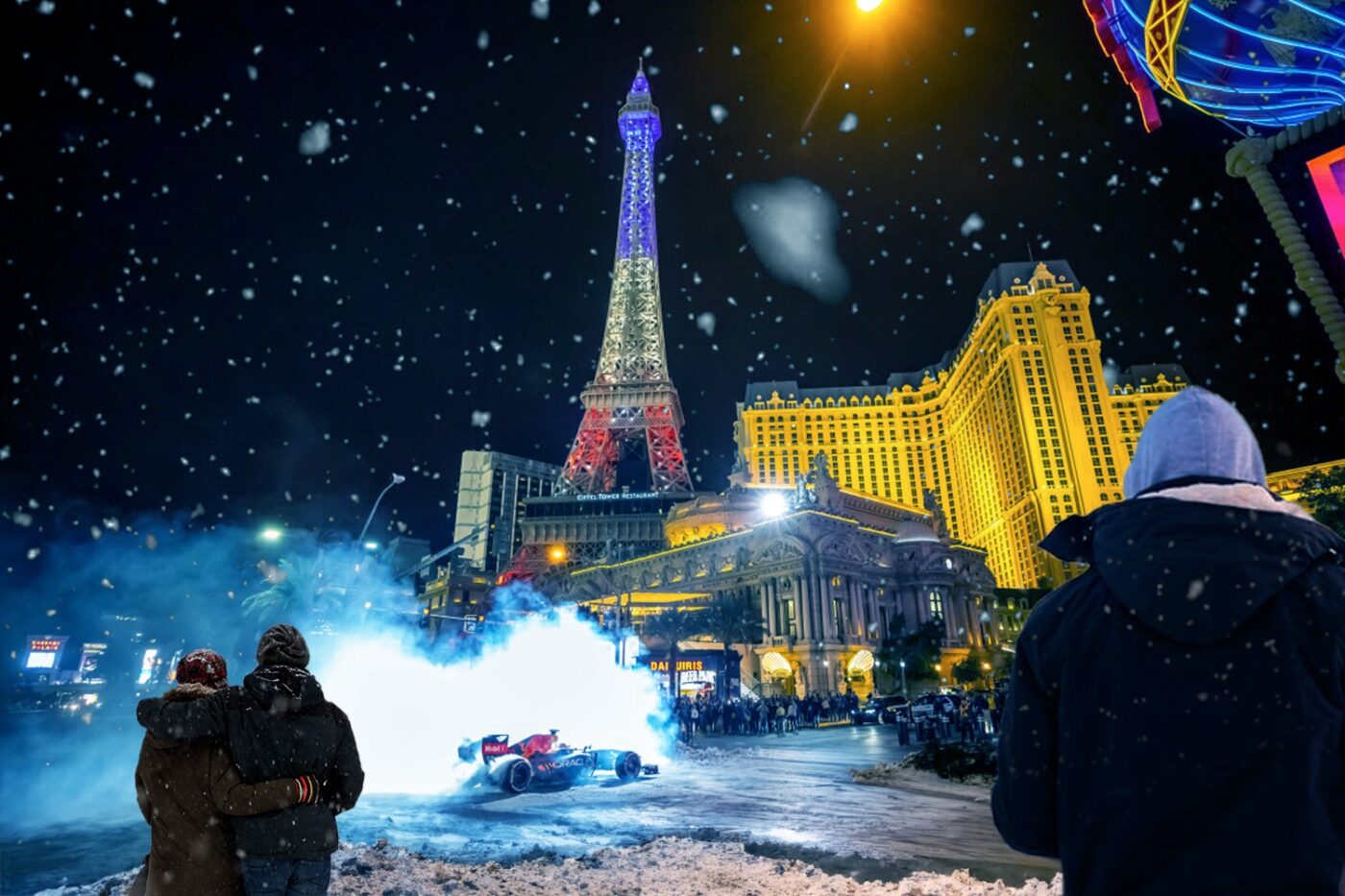In just 10 days, the inaugural Las Vegas Grand Prix will begin with huge anticipation, but as temperatures drop for this uniquely placed Formula 1 night race, drivers will face serious challenges in maintaining their cars’ grip… which could lead to some costly mistakes.
Images of the 2023 Las Vegas Grand Prix circuit were circulating on socials this week for its familiar shape. When viewed from above, the make-shift circuit that traverses through the iconic American city bears an uncanny resemblance to an upside-down pig.
On Sunday 19 November 2023 at 5PM AEST, three long straights and few high-speed corners await the 20 drivers as they take to the asphalt and line up in formation along the ‘back leg’ of the pig.
The inaugural Las Vegas Grand Prix is the second street circuit of the Formula 1 season; huge swathes of the iconic Las Vegas Strip have been ripped up and transformed into a temporary race circuit in anticipation of the third Grand Prix weekend held in the United States during this F1 season.
It’s led to many locals and tourists lashing out against the organisers, who are attempting to shield iconic landmarks along the track from view for spectors without tickets.

To fully present the opulent grandeur of the iconic Las Vegas cityscape, the cars will be cruising past Caesars Palace, the Bellagio, the Venetian and the new $3.5 billion MSG Sphere at more than 340 km/h. There’s just one problem: there are only 17 corners.
In order to accomodate the growing number of avid motorsports fans hoping to witness what has been touted as the “biggest sporting event of the year”, the Las Vegas Grand Prix start time has been pushed to 10PM local time – it will also allow organisers to show off Las Vegas to its fullest neon-lit spectacle.
RELATED: Official Line-Up Confirmed For Las Vegas Grand Prix Opening Ceremony Is The Most American Thing Ever
But it’s predicted that temperatures during the Las Vegas race weekend will range between 41-50º F (5-10º C) and could even plummet to as record-breaking low as 4° C as the race goes into the night… and that could be seriously bad news for the cars and their drivers.
The coldest race on record was the 1978 Canadian Grand Prix on the final race weekend of the season. 22 drivers took the track in early October; but only 12 drivers finished, with nine retirees – including James Hunt and Nikki Lauda – forced off the track through brake issues, spinning off and accidents among other causes.

The problem in Las Vegas is that as the drivers such as the three-time winner Max Verstappen and Australia’s own Daniel Ricciardo, race down the long straights along the arch of the back of the upside-down pig, they’ll certainly struggle to maintain the optimum temperature for their tyres.
As Formula 1 tyres are designed to offer maximum grip for the cars, but only at high temperatures, the lack of many significant high-speed corners could cause problems throughout the race.
RELATED: American Formula 1 Fans Fleeced Again As Official Merchandise Sees Massive Price Hike
The tyres will likely be kept at the optimum level before the race using bespoke tyre blankets, but once the cars take to the track, the narrow circuit, low track temperature and a relative lack of corners will make it difficult for the drivers to maintain their grip.
As temperatures drop on the freshly-laid, polished track, keeping the Formula 1 car tyres warm will be one of the biggest issues facing the drivers during this Grand Prix; and we could witness some devastating consequences.
